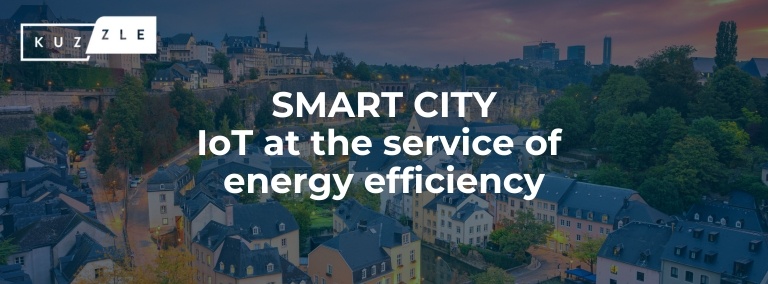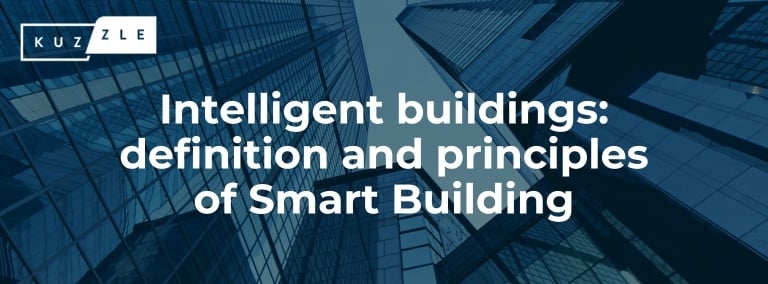In the age of the Internet of Things (IoT), data management and exploitation are becoming strategic issues for businesses.
With the proliferation of connected sensors, networks and applications, these information flows need to be centralised and unified. This is where the IoT hypervisor comes in.
This technology makes it possible to supervise, control and secure devices and data from IoT and business applications.
But what exactly is an IoT hypervisor? How does it work, and how do you choose the right solution? This article answers these essential questions.
In summary :
- What are the two types of hypervisor?
- What is the role of an IoT hypervisor?
- How does an IoT hypervisor work?
- How do you choose the right IoT hypervisor?
- Examples of uses and applications for an IoT hypervisor
- The benefits of an IoT hypervisor for digital transformation
What is an IoT hypervisor?
An IoT hypervisor is a software solution for monitoring, analysing and managing all the connected devices in an IoT environment. It acts as a centralised interface that collects and processes data from different sensors and networks. Its aim is to provide a global, real-time view of IoT infrastructures to optimise operations, facilitate decision-making and improve overall performance.
An IoT hypervisor differs from a traditional IoT platform in its ability to manage several heterogeneous environments simultaneously, independently of the manufacturers, protocols and networks used. It also takes into account external data sources, such as third-party applications or external databases, and integrates them into a unified interface to provide a complete view.
What are the two types of hypervisor?
There are two main categories of hypervisor :
- The first is the type 1 hypervisor, also known as ‘bare metal’, which is installed directly on the hardware. This architecture optimises performance and security, because there is no intermediary between the hardware and the systems being managed. This type is often preferred for critical infrastructures, such as the management of heating and ventilation systems in connected buildings.
- The second is the type 2 or ‘hosted’ hypervisor, installed on an existing operating system. More flexible and simpler to deploy, it is generally used in test environments or for less sensitive applications. For example, it can be used to centralise and monitor energy consumption, with data fed back from connected equipment as well as Linky or GRDF meters.
The choice between these two types essentially depends on the size of the infrastructure, performance and security requirements, and the company's IoT objectives.
What is the role of an IoT hypervisor?
The IoT hypervisor platform plays a central role in the management of connected infrastructures. Its primary objective is to supervise and centralise the data from the various sensors and connected equipment. This real-time supervision provides an instant global view of current operations. It also facilitates interoperability between devices, even when they use different protocols or technologies. Thanks to this capability, businesses can unify and synchronise their entire IoT ecosystem.
In addition, an IoT hypervisor, like Kuzzle's, centralises data and displays it in the form of management dashboards for an overview in real time.
Finally, it plays a key role in predictive maintenance, detecting anomalies and alerting teams before a breakdown occurs.
How does an IoT hypervisor work?
An IoT hypervisor works in several stages:
- Data collection: heterogeneous data is collected from sensors, connected equipment, networks and business applications.
- Integration of external sources: data from third-party applications is aggregated to provide a complete overview
- Consolidation and cleansing: raw data is processed to eliminate errors and duplicates.
- Analysis and processing: IoT data is analysed and processed to extract relevant indicators and detect any anomalies.
- Visualisation: results are presented in clear, customisable dashboards for real-time monitoring.
This structure enables companies to have a detailed understanding of their operations and to act quickly when necessary.
-3.png?width=920&height=460&name=Design%20sans%20titre%20(1)-3.png)
How do you choose the right IoT hypervisor?
The choice of an IoT hypervisor should be based on several criteria:
- Compatibility: this aspect is essential because the solution must be able to integrate different sensors and protocols. The interface must remain simple and accessible, particularly for non-technical teams.
- Scalability: this is a criterion that needs to be taken into account, because a company needs to be able to increase the number of connected sensors and applications without completely overhauling its infrastructure. What's more, the ability to integrate external sources is essential if a unified vision is to be achieved.
- Data security: this absolute priority must be addressed using encryption, authentication and traceability functions, which are essential for securing all the company's data.
Kuzzle's IoT platform meets these criteria by offering high-performance, agnostic hypervision, capable of adapting to a variety of environments while guaranteeing optimum data protection.
Would you like to find out more ?
Examples of uses and applications for an IoT hypervisor
IoT hypervisors such as Kuzzle's have applications in a wide range of sectors. Here are a few concrete examples that illustrate its ability to integrate multiple and heterogeneous data sources :
- Smart City: monitoring energy consumption by controlling and centralising data from connected equipment, such as street lighting, but also from Linky and GRDF meters to optimise energy management.
- Logistics and transport: real-time supervision of the supply chain, integrating data from on-board temperature and position sensors, as well as from partner platforms to optimise journeys and anticipate risks.
- Connected building: intelligent management of heating, ventilation and air conditioning (HVAC) systems by analysing data from internal sensors and external readings from weather services.
- Healthcare: monitoring of patients' vital signs via connected medical devices and correlation with external hospital data for improved monitoring and responsiveness.
- Industry: optimising production lines by integrating data from machines, suppliers and partners to proactively manage stocks and maintenance.
These use cases highlight the ability of an IoT hypervisor to aggregate and analyse data from internal and external sources, and to draw out strategic insights for different business sectors.
The benefits of an IoT hypervisor for digital transformation
The integration of an IoT hypervisor, such as Kuzzle IoT, within a company represents a real lever for accelerating its digital transformation. By providing a unified, centralised view of all data from connected devices and external sources, it considerably simplifies access to information. This simplification enables faster, more informed decision-making, while reducing the costs associated with infrastructure maintenance and management.
In addition, an IoT hypervisor promotes the use of data by making it accessible and understandable to business teams and innovation departments. This makes it easier to innovate, experiment with new services and optimise existing processes, putting businesses on the road to agility and performance.
Managing data security
Data security is a major issue in the management of IoT projects. An effective hypervisor must ensure that sensitive information is protected by encryption mechanisms, both in transit and at rest.
Authentication and access management are also crucial in limiting the risks of intrusion. Complete traceability of actions and events also enables monitoring and compliance with regulatory requirements.
Kuzzle's IoT platform integrates these security functionalities, offering reliable hypervision that complies with market standards.
To remember
The IoT hypervisor is a strategic lever for businesses looking to optimise their connected infrastructures. By centralising and unifying data from different sources, it facilitates supervision, analysis and decision-making.
Opting for a solution like Kuzzle's IoT platform provides access to high-performance, secure hypervision that can be integrated into any existing environment. As a result, businesses can take full advantage of their IoT projects.
Want to find out more ? Find out how Kuzzle IoT simplifies the management of connected devices and helps you make better use of your data.





